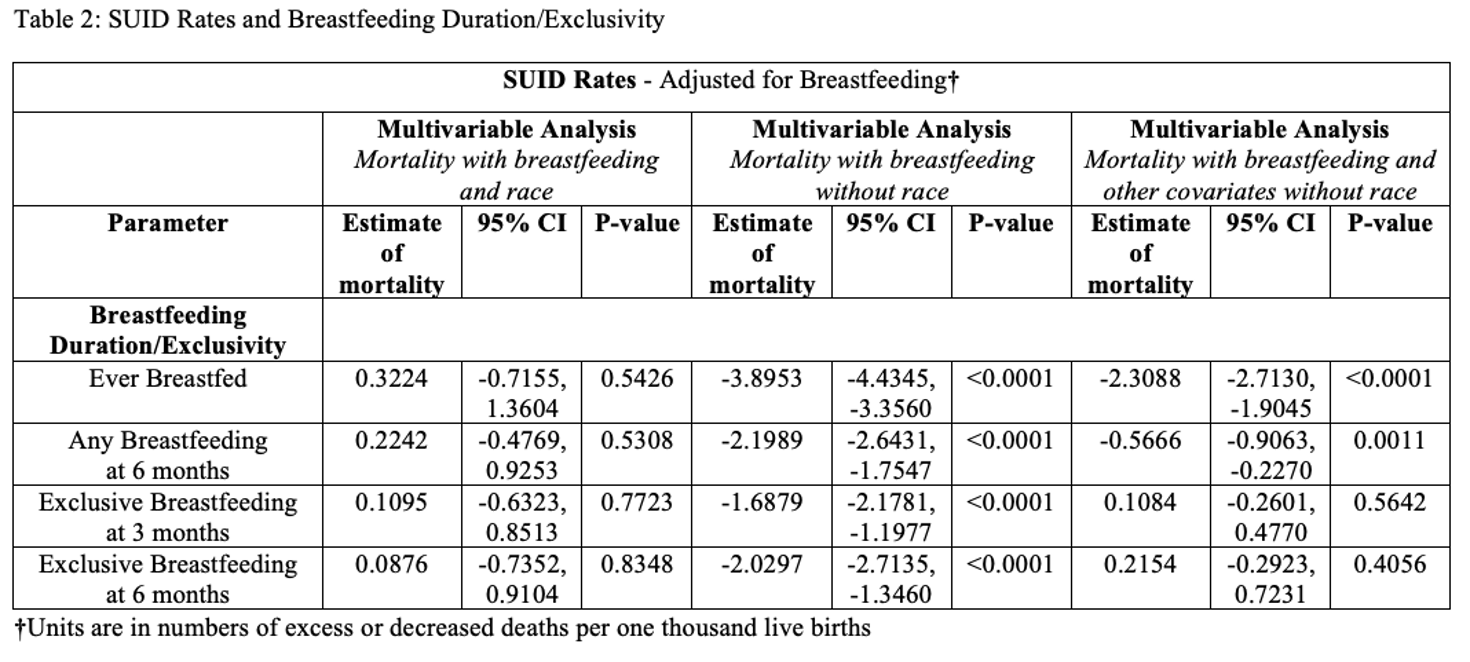Breastfeeding/Human Milk
Category: Abstract Submission
Breastfeeding/Human Milk I
412 - Challenges and Opportunities of Using a National Database to Evaluate Racial/Ethnic Disparities and Breastfeeding Effects on Sudden Unexpected Infant Death
Sunday, April 24, 2022
3:30 PM - 6:00 PM US MT
Poster Number: 412
Publication Number: 412.301
Publication Number: 412.301
Sera Yoo, Cooper Medical School of Rowan University, Camden, NJ, United States; Menaka Dhingra, University of Pennsylvania, Philadelphia, PA, United States; Lori Feldman-Winter, Cooper Medical School of Rowan University, Cherry Hill, NJ, United States; Melissa C. Bartick, Harvard Medical School and Mount Auburn Hospital, Cambridge, MA, United States; John Gaughan, Cooper Medical School of Rowan University, Camden, NJ, United States; Saba Daneshpooy, Cooper Medical School of Rowan University, Philadelphia, PA, United States; Nikhil Bhana, Cooper Medical School of Rowan University, Cinnaminson, NJ, United States

Sera Yoo, MPH
Medical student
Cooper Medical School of Rowan University
Closter, New Jersey, United States
Presenting Author(s)
Background: Sudden Unexpected Infant Death (SUID) rates remain higher in American Indian/American Native (AI/AN) and non-Hispanic Black (NHB) infants than other racially defined groups despite declines in overall SUID rates. Racial disparities are also evident in breastfeeding which is associated with reduced risk of SUID.
Objective: The goal of this study was to assess the relationship between racial disparities in SUID and the effect of breastfeeding beyond the newborn period in the US population using nationally reported public databases.
Design/Methods: Data was extracted from the Centers for Disease Control and Prevention (CDC) Wide-ranging Online Data for Epidemiologic Research (WONDER) and National Immunization Surveys (NIS) databases from 2009-2017. WONDER data was restricted to full term infants and sorted by death year and race/ethnicity, and selected maternal and birth characteristics. NIS breastfeeding data included ever breastfed, any breastfeeding at 6 months, and exclusive breastfeeding at 3 and 6 months. Breastfeeding rates from the NIS were assigned to the sorted mortality data based on race/ethnicity. Analysis used weighted (by number of births) multiple linear regression to derive estimates with 95% confidence intervals.
Results: SUID rates were highest among NHB and AI/AN infants. These infants also had the lowest breastfeeding rates. When both breastfeeding and race/ethnicity were included in the analyses, race/ethnicity confounded the relationship between breastfeeding and SUID. When race was excluded, breastfeeding was associated with significantly decreased SUID rates. In particular, ever breastfeeding and any breastfeeding at 6 months were associated with significantly decreased SUID rates.Conclusion(s): These results demonstrated that race/ethnicity confounds the relationship between breastfeeding and SUID. This analysis was limited due to the problem that individually acquired breastfeeding duration data was unavailable. Individual SUID rates were available for maternal and birth characteristics but not breastfeeding beyond initiation. Publicly available individual level data about breastfeeding beyond initiation is vital to accurately evaluate SUID mortality rates in the context of racial disparities. Our study reveals a need for adding breastfeeding duration and exclusivity as additional data points in SUID analyses to better understand the role that continued breastfeeding plays in racial disparities in SUID.
Sera Yoo 2021 resume.pdf
Table 2: SUID Rates and Breastfeeding Duration/Exclusivity
Objective: The goal of this study was to assess the relationship between racial disparities in SUID and the effect of breastfeeding beyond the newborn period in the US population using nationally reported public databases.
Design/Methods: Data was extracted from the Centers for Disease Control and Prevention (CDC) Wide-ranging Online Data for Epidemiologic Research (WONDER) and National Immunization Surveys (NIS) databases from 2009-2017. WONDER data was restricted to full term infants and sorted by death year and race/ethnicity, and selected maternal and birth characteristics. NIS breastfeeding data included ever breastfed, any breastfeeding at 6 months, and exclusive breastfeeding at 3 and 6 months. Breastfeeding rates from the NIS were assigned to the sorted mortality data based on race/ethnicity. Analysis used weighted (by number of births) multiple linear regression to derive estimates with 95% confidence intervals.
Results: SUID rates were highest among NHB and AI/AN infants. These infants also had the lowest breastfeeding rates. When both breastfeeding and race/ethnicity were included in the analyses, race/ethnicity confounded the relationship between breastfeeding and SUID. When race was excluded, breastfeeding was associated with significantly decreased SUID rates. In particular, ever breastfeeding and any breastfeeding at 6 months were associated with significantly decreased SUID rates.Conclusion(s): These results demonstrated that race/ethnicity confounds the relationship between breastfeeding and SUID. This analysis was limited due to the problem that individually acquired breastfeeding duration data was unavailable. Individual SUID rates were available for maternal and birth characteristics but not breastfeeding beyond initiation. Publicly available individual level data about breastfeeding beyond initiation is vital to accurately evaluate SUID mortality rates in the context of racial disparities. Our study reveals a need for adding breastfeeding duration and exclusivity as additional data points in SUID analyses to better understand the role that continued breastfeeding plays in racial disparities in SUID.
Sera Yoo 2021 resume.pdf
Table 2: SUID Rates and Breastfeeding Duration/Exclusivity

